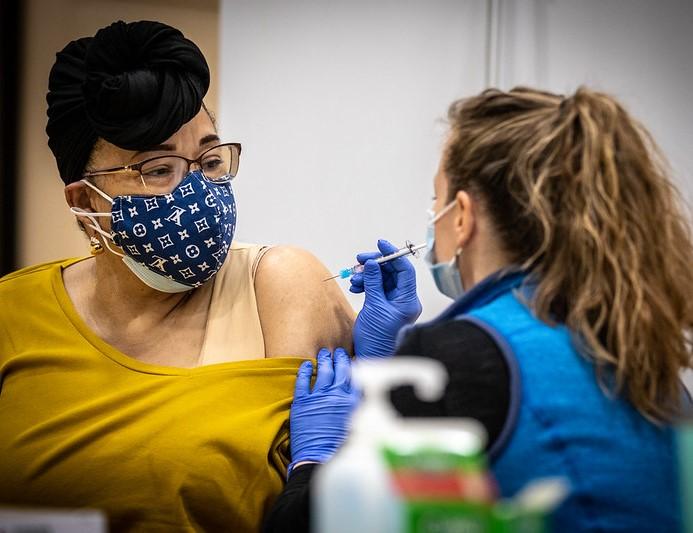Two studies today describe US COVID-19 vaccination disparities, one evaluating vaccine allocation plans aimed at reducing distribution differences, and the other revealing urban versus rural inequities.
Structural, systemic racism
The first study, led by University of Pennsylvania at Philadelphia researchers and published in Nature Medicine, involved analysis of COVID-19 vaccine allocation plans provided by the Centers for Disease Control and Prevention's (CDC's) 64 jurisdictions, which consist of 50 states, five large cities, eight territories, and Washington, DC.
The CDC requested that all jurisdictions provide vaccine allocation plans by Oct 31, 2020. The researchers evaluated plans provided by Nov 8, 2020, and updates through Mar 30, 2021, to determine how well they reflected a proposal from the National Academies of Science, Engineering, and Medicine.
The academies recommended prioritizing areas disproportionately affected by coronavirus because of structural and systemic racism leading to poor health outcomes. One such way of doing that, the authors said, is to use the CDC's Social Vulnerability Index (SVI) or a similar index that considers metrics such as income, educational level, and housing quality.
Defining priority groups, areas
An initial search of vaccine allocation plans conducted Nov 7 to 14, 2020, identified 63 summaries (98.4% of jurisdictions) and 47 full guidance documents (73.4%, including all states). Later searches turned up one more summary and five more full guidance documents, representing 100% and 81.3% of all jurisdictions, respectively.
Twenty-four jurisdictions published at least one update to their guidance documents, and 35 published at least one supplementary document. Thirty-seven jurisdictions including 269 million people (82%) said they used a disadvantage index, 29 of them naming the SVI. Thirteen jurisdictions reported using seven other preexisting or internally created indices, and five reported use of more than one index. Among the 20 highly vulnerable jurisdictions, 14 said they had adopted a disadvantage index.
Fourteen jurisdictions had prioritized vaccines by ZIP code and metrics such as coronavirus incidence or vaccine uptake rates by Mar 30, and 37 were using disadvantage indices, up from 19 in November 2020. Among jurisdictions with the largest proportions of economically and socially vulnerable communities, use of disadvantage indices rose from 7 to 14.
Thirty-six jurisdictions reported using Tiberius, a new software platform that can integrate the SVI. Thirty-seven jurisdictions had begun prioritizing socially vulnerable groups through the use of a disadvantage index with five different purposes: increasing shares of vaccines or vaccination appointments, defining priority groups or areas, targeting outreach and communication, planning the location of vaccination sites, and tracking vaccine uptake.
Four states used an index to track vaccine uptake, and 15 jurisdictions said they planned to implement an index to determine optimal vaccination sites, conduct outreach, or inform communication strategies.
"Jurisdictions should explore, to the fullest extent, the potential of using disadvantage indices alongside other options to allocate vaccines equitably, not just within each of the priority populations but also now that vaccines are offered to the general population," the researchers concluded.
They added that having enough vaccine doses isn't enough. "Setting aside larger shares of vaccines alone can be meaningless for reducing inequity if these steps are not matched with genuine and proactive efforts to make vaccines available in conveniently located and trusted settings," the authors said. "However, currently, only 18 jurisdictions indicate using a disadvantage index for planning the location of vaccination sites or communication and outreach efforts."
Rural vs urban disparities
In the second study, published in Morbidity and Mortality Weekly Report, CDC researchers examined COVID-19 vaccination disparities in rural and urban US counties from Dec 14, 2020, to Apr 10, 2021. Specifically, they assessed county-level vaccine administration information on adults who received their first dose of either the Pfizer/BioNTech or Moderna coronavirus vaccine or a single dose of the Johnson & Johnson vaccine in 49 states and Washington, DC.
They found that coronavirus vaccine coverage was lower in rural than in urban counties (38.9% vs 45.7%), regardless of resident age or sex. Of all vaccinees, 67.1% were vaccinated in their county of record and 93% in their own state. More rural residents traveled to nonadjacent counties than those in urban areas (14.6% vs 10.3%).
The researchers noted that residents of rural counties are more likely than their urban counterparts to lack health insurance, have underlying illnesses or disabilities, be 65 years or older, and have less access to healthcare centers with intensive care units.
"Disparities in COVID-19 vaccination access and coverage between urban and rural communities can hinder progress toward ending the pandemic," the authors wrote. "Public health practitioners should collaborate with health care providers, pharmacies, employers, faith leaders, and other community partners to identify and address barriers to COVID-19 vaccination in rural areas."




















